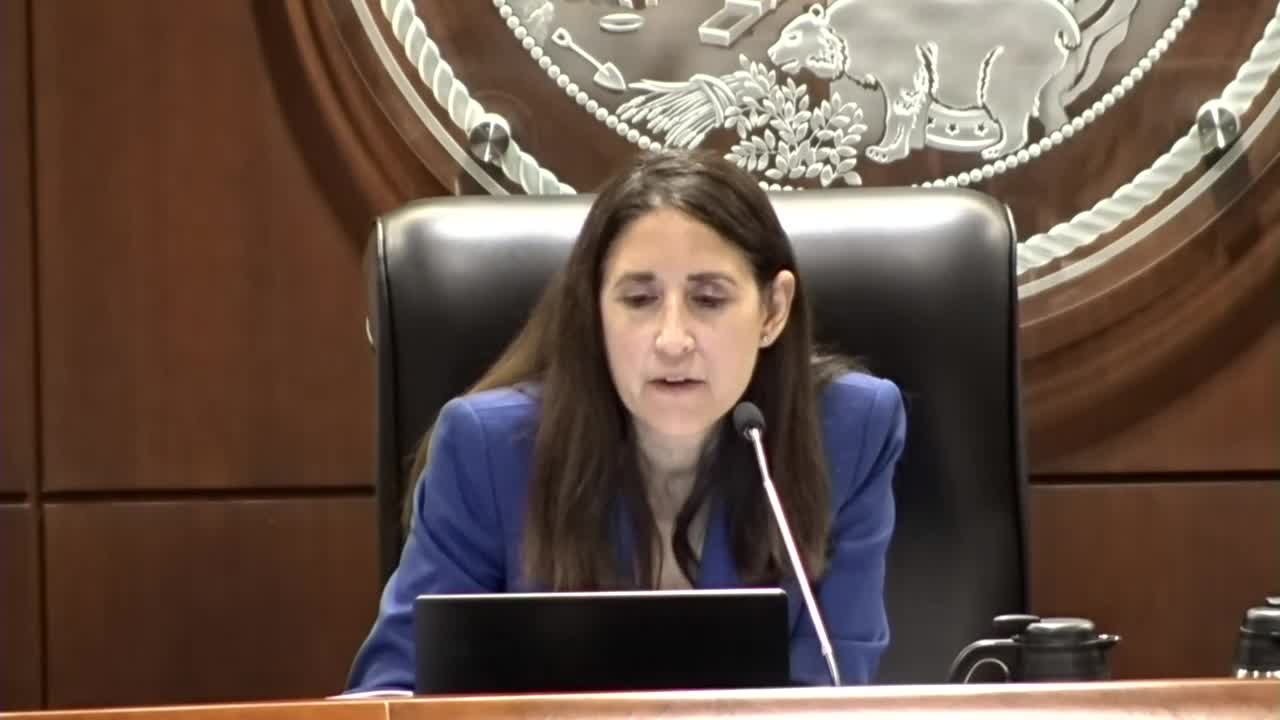California Judicial Council unveils 2025 Language Need and Interpreter Use Study findings
July 18, 2025 | Judicial Council of California, Judicial, California
This article was created by AI summarizing key points discussed. AI makes mistakes, so for full details and context, please refer to the video of the full meeting. Please report any errors so we can fix them. Report an error »

In a pivotal meeting held on July 18, 2025, the Judicial Council of California gathered to discuss the findings of the 2025 Language Need and Interpreter Use Study, a comprehensive analysis mandated by state law. The presentation, led by Judge Marie Sanchez and her colleagues from the Center for Families, Children, and the Courts, highlighted significant trends and challenges in the realm of court interpretation across California.
The study, which spans data from fiscal years 2020-2024, revealed a staggering 45% decline in interpreter usage compared to previous years, largely attributed to the COVID-19 pandemic's impact on case filings. Despite this downturn, the landscape is gradually recovering, with over 2.5 million interpretations recorded during the study period. In-person interpretations remain the dominant method, accounting for 93% of all services, while remote and telephonic options, which surged during the pandemic, continue to offer flexibility.
A pressing concern raised during the meeting was the aging interpreter workforce. With 32% of interpreters over the age of 65, the need for new talent is critical. The study identified 1,856 certified interpreters covering 114 spoken languages, including American Sign Language. Spanish remains the most frequently interpreted language, comprising 88% of all interpretations, followed by Mandarin, Vietnamese, and several others.
Eunice Lee, a supervising analyst, emphasized the importance of addressing the rising costs associated with contractor interpreters, which increased by 42% in the last fiscal year. The council is exploring initiatives to prioritize hiring court employees over contractors to stabilize costs and ensure consistent service delivery.
The meeting also underscored the growing demand for interpretation services in indigenous languages from Mexico and Guatemala, reflecting California's diverse population. With nearly 6.4 million residents classified as limited English proficient, the council is committed to enhancing language access through various initiatives, including a redesigned language access services website and funding for technology grants aimed at improving court experiences for non-English speakers.
As the council concluded its discussions, key recommendations were made to maintain the certification of frequently interpreted languages, monitor emerging linguistic needs, and expand remote interpretation solutions. These steps are vital to ensuring that California's courts remain accessible to all residents, regardless of language barriers, as they navigate the complexities of the legal system.
The study, which spans data from fiscal years 2020-2024, revealed a staggering 45% decline in interpreter usage compared to previous years, largely attributed to the COVID-19 pandemic's impact on case filings. Despite this downturn, the landscape is gradually recovering, with over 2.5 million interpretations recorded during the study period. In-person interpretations remain the dominant method, accounting for 93% of all services, while remote and telephonic options, which surged during the pandemic, continue to offer flexibility.
A pressing concern raised during the meeting was the aging interpreter workforce. With 32% of interpreters over the age of 65, the need for new talent is critical. The study identified 1,856 certified interpreters covering 114 spoken languages, including American Sign Language. Spanish remains the most frequently interpreted language, comprising 88% of all interpretations, followed by Mandarin, Vietnamese, and several others.
Eunice Lee, a supervising analyst, emphasized the importance of addressing the rising costs associated with contractor interpreters, which increased by 42% in the last fiscal year. The council is exploring initiatives to prioritize hiring court employees over contractors to stabilize costs and ensure consistent service delivery.
The meeting also underscored the growing demand for interpretation services in indigenous languages from Mexico and Guatemala, reflecting California's diverse population. With nearly 6.4 million residents classified as limited English proficient, the council is committed to enhancing language access through various initiatives, including a redesigned language access services website and funding for technology grants aimed at improving court experiences for non-English speakers.
As the council concluded its discussions, key recommendations were made to maintain the certification of frequently interpreted languages, monitor emerging linguistic needs, and expand remote interpretation solutions. These steps are vital to ensuring that California's courts remain accessible to all residents, regardless of language barriers, as they navigate the complexities of the legal system.
View full meeting
This article is based on a recent meeting—watch the full video and explore the complete transcript for deeper insights into the discussion.
View full meeting
